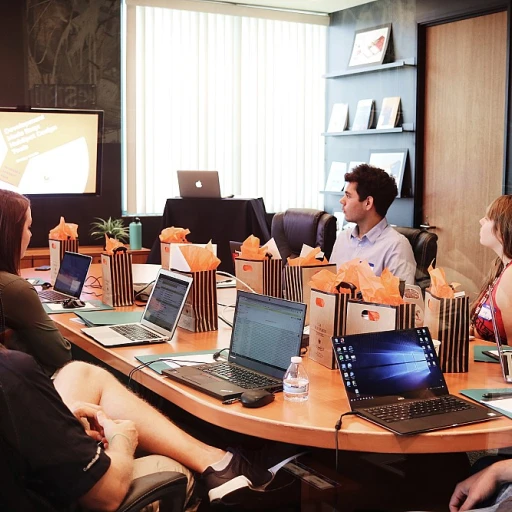Understanding the Need for After-Hours Monitoring
Recognizing the Importance of Monitoring Beyond Work Hours
In today's fast-paced business environment, the need for monitoring employees after office hours is becoming increasingly apparent. Employers are seeking ways to enhance security and ensure the protection of company assets. This is particularly relevant in the Arabian Emirate companies, where the business landscape is rapidly evolving.
Employers are often tasked with ensuring that their workplace remains secure even when employees are not physically present. This need arises from various factors, including the necessity to protect sensitive data, prevent unauthorized access, and maintain overall workplace security. The modern workplace is no longer confined to the traditional 9-to-5 work hours, making it crucial for businesses to adapt to these changes.
As businesses evolve, so do the methods of employee monitoring. This includes the implementation of surveillance cameras, access control systems, and monitoring software to track employee activities. While these tools can significantly enhance security, they also raise concerns about employee privacy and the legal implications of monitoring employees outside of regular work hours.
It's essential for companies to strike a balance between ensuring security and respecting employee privacy. This involves understanding the legal framework surrounding workplace surveillance and the expectations of privacy that employees may have. Employers must navigate these complexities carefully to avoid potential legal issues and maintain a positive workplace environment.
For more insights on how office managers can foster a unified corporate culture while implementing these practices, you can explore cultivating cohesion in your workplace.
Technological Solutions for Effective Monitoring
Technological Tools for Enhanced Employee Oversight
In the modern workplace, leveraging technology for employee monitoring has become a common practice. Companies in the Arabian Emirates are increasingly adopting advanced tools to ensure security and productivity while respecting privacy laws. Here’s a closer look at some of the key technological solutions available:
- Video Surveillance: Surveillance cameras are a staple in many businesses, providing a visual record of workplace activities. They help deter unauthorized access and ensure that security protocols are followed. However, it is essential for employers to balance their use with employees' expectation of privacy.
- Monitoring Software: Employers often use monitoring software to track work hours and productivity. This software can log keystrokes, monitor internet usage, and even capture screenshots. While effective, it raises concerns about workplace privacy and the need for clear policies.
- Access Control Systems: These systems regulate who can enter specific areas of a workplace, enhancing security by preventing unauthorized access. They are crucial in protecting sensitive data and assets, but require careful management to avoid infringing on employee privacy.
- Time and Attendance Systems: These systems automate the tracking of employee work hours, reducing errors and enhancing productivity. They provide a clear record of attendance and can be integrated with payroll systems for efficiency.
- Data Protection Measures: With the increasing reliance on digital tools, data protection is paramount. Employers must ensure that any monitoring activities comply with legal standards to protect employee data from misuse.
Employers must navigate the complex landscape of workplace surveillance with care, ensuring that their practices are legally compliant and respectful of employee privacy. Bridging cultural gaps and understanding diverse perspectives can further enhance the effectiveness of these monitoring tools in fostering a secure and productive environment.
Balancing Security and Employee Privacy
Finding the Right Balance Between Security and Privacy
In today's digital age, monitoring employees has become a common practice for many businesses. However, it's crucial for employers to strike a balance between ensuring security and respecting employee privacy. This balance is not just a matter of ethics but also a legal requirement in many jurisdictions, including the Arabian Emirates.
Employers often use monitoring software and surveillance cameras to safeguard their assets and ensure productivity. Yet, the implementation of such measures must consider the expectation of privacy that employees have, especially after regular work hours. The challenge lies in maintaining a secure workplace without overstepping boundaries that could infringe on employee privacy.
Legal Framework and Privacy Concerns
Understanding the legal framework surrounding employee monitoring is essential. Privacy laws in the UAE and other regions provide guidelines on how employers can monitor employees while respecting their rights. Employers must be transparent about their surveillance practices and ensure that any data collected is used appropriately and securely.
For instance, video surveillance might be necessary for security reasons, but it should not extend into areas where employees have a reasonable expectation of privacy, such as restrooms or break rooms. Similarly, monitoring social media activities should be approached with caution to avoid unauthorized access to personal information.
Implementing Best Practices
To effectively balance security and privacy, companies should consider adopting best practices such as:
- Clearly communicating monitoring policies to all workers.
- Limiting access to monitoring data to authorized personnel only.
- Regularly reviewing and updating monitoring practices to align with current legal standards.
- Providing training for managers on how to handle monitoring data responsibly.
By taking these steps, businesses can ensure that their monitoring practices are not only effective but also respectful of employee rights. For more insights on managing time and expectations in the workplace, you might find this guide on time management useful.
Case Studies from Arabian Emirate Companies
Real-World Insights from Emirate Companies
Arabian Emirate companies have been at the forefront of implementing advanced monitoring solutions, balancing the need for security with employee privacy. These companies have adopted various strategies to ensure effective workplace surveillance while respecting legal and ethical boundaries.
One prominent approach involves the use of video surveillance and monitoring software to enhance security and productivity. Employers have installed surveillance cameras in strategic locations to monitor employee activities during and after work hours. This not only helps in preventing unauthorized access but also in maintaining a secure work environment.
Moreover, many companies have embraced access control systems that track time attendance and regulate entry to sensitive areas. These systems are designed to protect company data and ensure that only authorized personnel have access to critical resources.
However, implementing such measures comes with challenges. Companies must navigate legal frameworks and privacy laws to avoid infringing on employee rights. The expectation of privacy is a significant concern, and businesses must ensure that their monitoring practices comply with regional monitoring laws.
Despite these challenges, the results have been largely positive. Employers have reported increased productivity and a reduction in security breaches. The key to success lies in transparent communication with employees about monitoring practices and ensuring that surveillance is conducted within legal and ethical limits.
These case studies highlight the importance of a balanced approach to monitoring employees, ensuring that security measures do not compromise the trust and privacy of the workforce.
Challenges and Risks in Monitoring Practices
Addressing the Complexities of Monitoring Practices
In the realm of workplace surveillance, employers face a myriad of challenges and risks when monitoring employees after work hours. While the need for security and productivity enhancement is clear, the implementation of monitoring practices often encounters significant hurdles.
Legal and Ethical Concerns
One of the primary challenges is navigating the legal landscape surrounding employee monitoring. Different jurisdictions have varying laws governing workplace privacy and surveillance. Employers must ensure that their monitoring practices comply with local data protection and privacy laws to avoid legal repercussions. This includes understanding the legal boundaries of video surveillance, monitoring software, and access control systems.
Balancing Security with Employee Privacy
Employers must also strike a balance between ensuring security and respecting employee privacy. Monitoring employees after office hours can lead to concerns about unauthorized access to personal data and the potential for invading employees' expectation of privacy. Companies must establish clear policies that define the extent of monitoring and communicate these policies effectively to their workforce.
Technological Limitations
Implementing advanced monitoring solutions often requires significant investment in technology and infrastructure. Employers may face challenges in integrating monitoring software and surveillance cameras into their existing systems. Additionally, ensuring the security of the collected data is paramount to prevent unauthorized access and potential data breaches.
Impact on Workplace Dynamics
Monitoring practices can also affect workplace dynamics and employee morale. Workers may feel a sense of distrust or increased pressure, which can impact productivity and overall business performance. Employers must consider how their monitoring strategies align with their company's culture and values to maintain a positive work environment.
Conclusion
While the challenges and risks associated with employee monitoring are significant, they are not insurmountable. By carefully considering legal, ethical, and technological aspects, employers can develop monitoring practices that enhance security without compromising employee trust and privacy.
Future Trends in Employee Monitoring
Emerging Trends in Employee Monitoring
The landscape of employee monitoring is constantly evolving, driven by technological advancements and changing workplace dynamics. As companies in the Arabian Emirates and beyond seek to enhance productivity and security, several trends are shaping the future of workplace surveillance.
Integration of AI and Machine Learning
Artificial intelligence (AI) and machine learning are increasingly being integrated into monitoring systems. These technologies offer employers the ability to analyze vast amounts of data quickly and accurately. By identifying patterns in employee behavior, AI can help in predicting potential security breaches or productivity issues, allowing companies to take proactive measures.
Focus on Data Protection and Privacy
With the growing reliance on digital monitoring tools, there is a heightened focus on data protection and employee privacy. Employers must navigate the complex landscape of privacy laws to ensure compliance while maintaining effective monitoring practices. This balance is crucial to avoid legal issues and maintain trust among employees.
Remote Work and Flexible Monitoring Solutions
The rise of remote work has necessitated the development of flexible monitoring solutions. Employers are now investing in tools that allow them to monitor employees working from various locations while respecting their privacy. This includes time attendance software and access control systems that can be tailored to different work environments.
Enhanced Video Surveillance Technologies
Video surveillance remains a cornerstone of workplace security. Recent advancements in camera technology, including higher resolution and better night vision, are enhancing the effectiveness of surveillance systems. Employers are also exploring the use of video analytics to monitor workplace activities more efficiently.
Legal and Ethical Considerations
As monitoring technologies become more sophisticated, legal and ethical considerations are becoming increasingly important. Companies must ensure that their monitoring practices comply with regional laws and respect the expectation of privacy among workers. This includes obtaining consent for monitoring and being transparent about how data is used.
In conclusion, the future of employee monitoring in the Arabian Emirates will be shaped by a blend of technological innovation and a commitment to ethical practices. Employers must stay informed about these trends to implement effective and compliant monitoring strategies.












